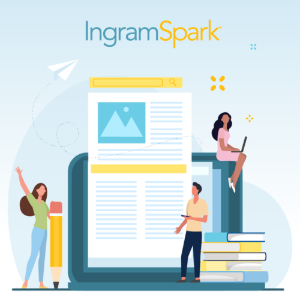If you want people to read your book, you have to write for a particular group of people, as it's not realistic that everyone will like your book. Knowing who your audience is before you start writing is an advantage—you won't have to work that out after you've already finished a product you’re trying to promote. To be honest, that's not how most writers start out, but whether you’ve already published your book, or you’ve only written the first chapter, taking a deep dive into who you're writing for is a must if you’re doing your own marketing.
You probably have at least a vague idea of who your audience is based on the genre of your book, but you’re going to have to get even more specific to ensure your marketing efforts are effective. You can further segment your audience based on common preferences, behaviors, interests and characteristics.
Most brands actually use data from their current customers to improve their advertising and attract new ones. This is a terrific plan, but unless you’ve already written, published, and sold thousands of copies, you won’t have that data to pull from. Fortunately, thanks to the internet, you can find other data that is equally helpful.
Research Your Demographics and Psychographics
Think of a popular book that’s very similar to yours, and dig deeper than just the top-level genre. If you’ve written a female-focused, satirical, historical fiction novel based in the Regency era, then you should visit websites, subreddits, and social media pages dedicated to Jane Austen’s work. Read the posts and comments of the most active users, and then visit their profiles or pages to learn their demographics such as age, gender, education, income level, marital status, what type of job they have, and if they live in the city, suburbs, or a rural area.
Next, it’s time to go beyond typical demographics and consider psychographic areas. This includes their hobbies, values, interests, lifestyle, and personality traits. These more intimate qualities give you great insight into your audience’s motivations and potential purchasing decisions regarding books and reading. It may take time to comb through it all, but this information is out there and available for you to use to your advantage.
Consider Your Own Interests
Another avenue to finding your target audience is to perform some introspection. You love your book; you probably wrote it for yourself initially. It appeals to your interests and draws from your life experiences. So start looking for people who are similar to you in all of those demographic categories. Go to the places—online or physically—that you enjoy and find like-minded people. These people are more likely to want to read your book and be receptive to the marketing for it. You’ll probably find some friends in the process, too.
Consider Your Main Character
A close look at who your protagonist is can also lead you to a more refined target audience. A large percentage of books are geared toward readers who can relate to the main character. Anne of Green Gables is for teen and tween girls, and in the book Anne ages from 11 to 16. Of course, older people enjoy the book as well. Most likely, people of various demographics will enjoy your book too, but your promotion should be more focused to achieve the best results.
Evaluate Your Findings
Now you’re ready to evaluate whether these audience segments prefer print books, ebooks, or audiobooks; how often they read and how much time overall they spend reading, who their favorite authors are, if they are partial to a certain bookstores or libraries; and if they’re buying books for entertainment, self-improvement, education, or some other purpose.
After you’ve completed all this research, you’ll know where to find the people who are most likely to enjoy your book, where to post content or ads so they see it, and how to best get their attention. Customizing your marketing efforts to be directly related to these highly targeted groups within your audience often garners improved reader engagement and book sales as well as reader loyalty.
Knowing your target audience can help you market your self-published book effectively, and it can also make you a stronger writer. Finding out who your audience actually is versus who you want it to be is crucial. It takes time to dig now and find the details, but it’s worth it.












